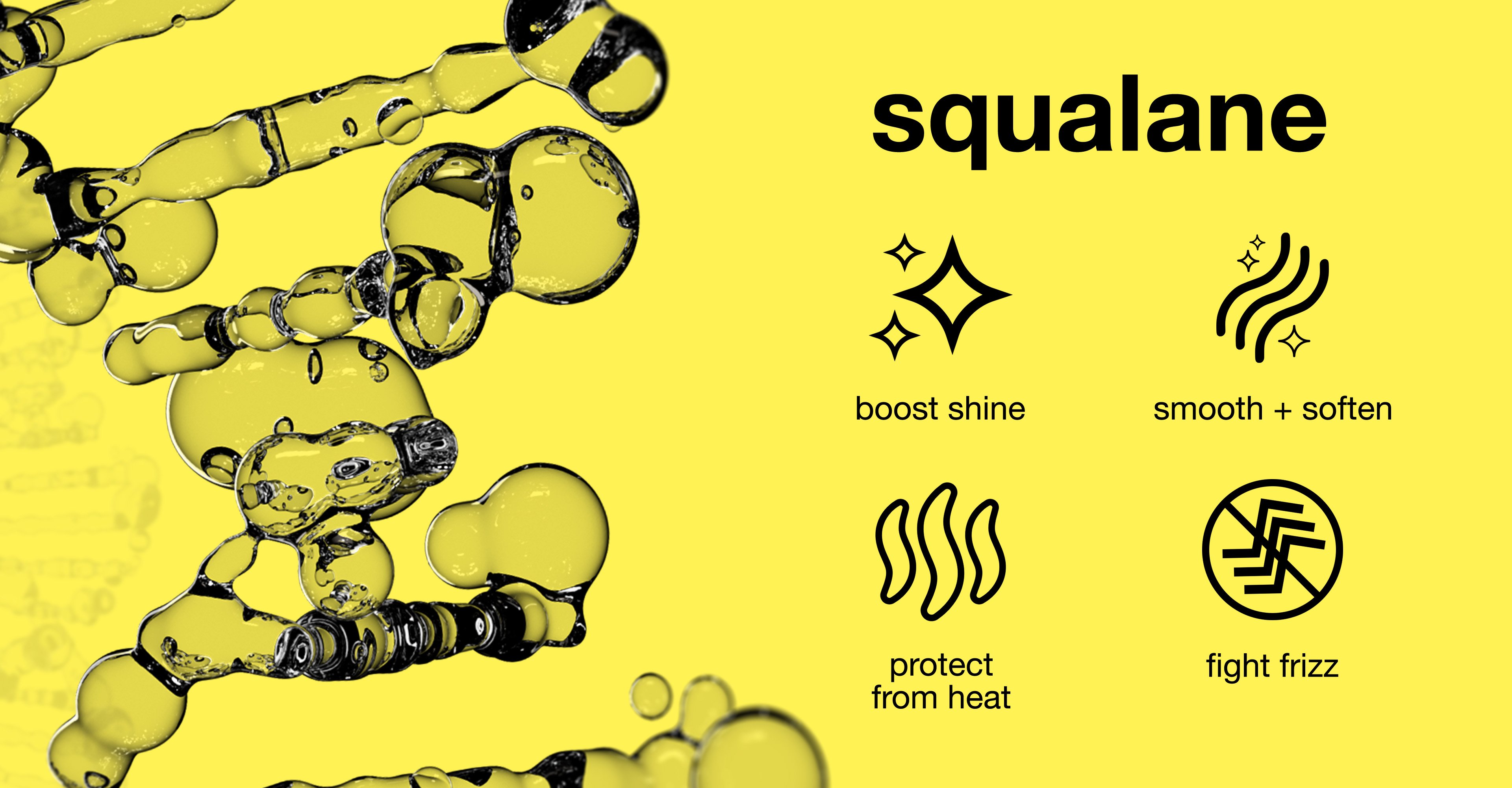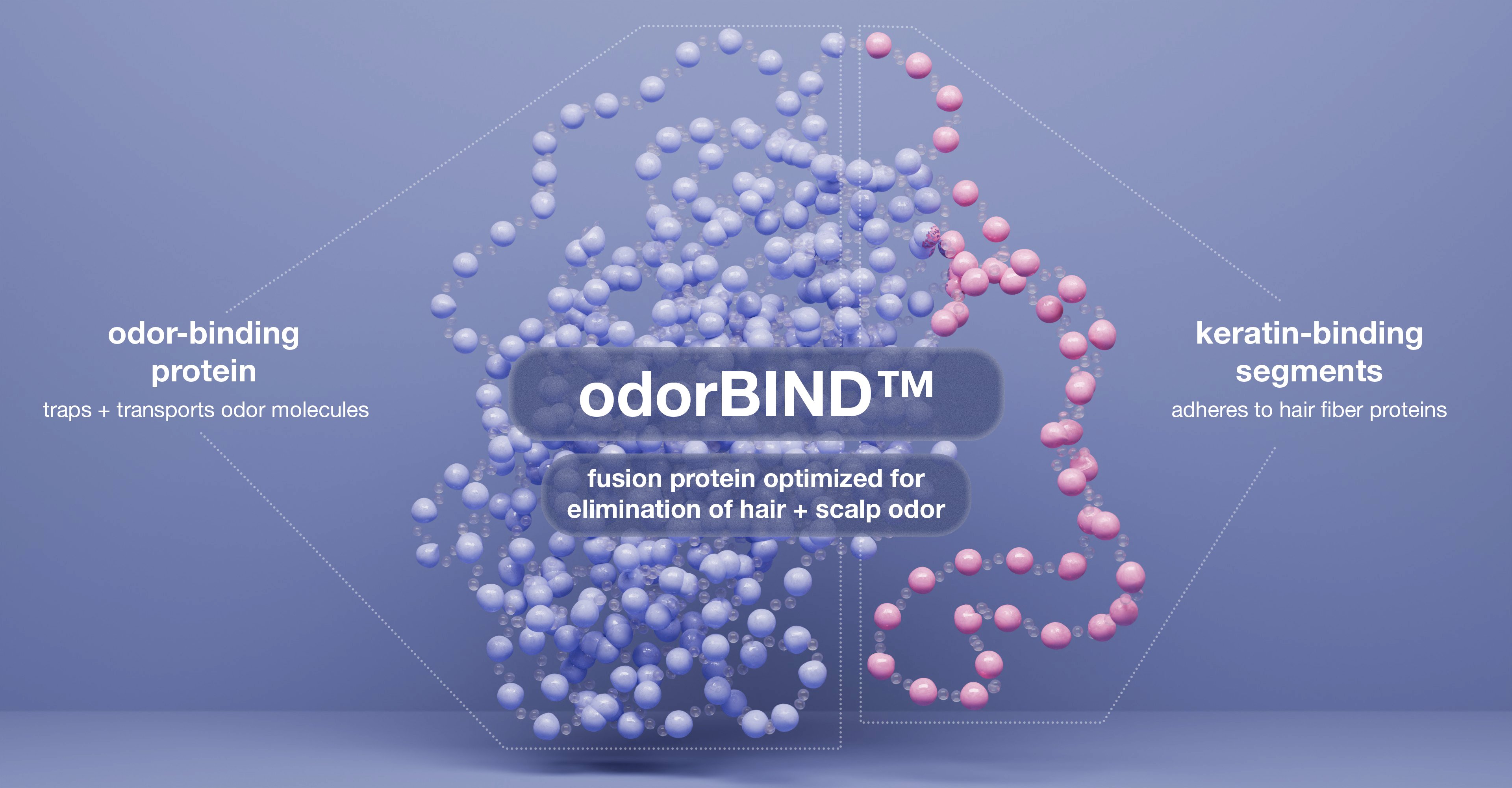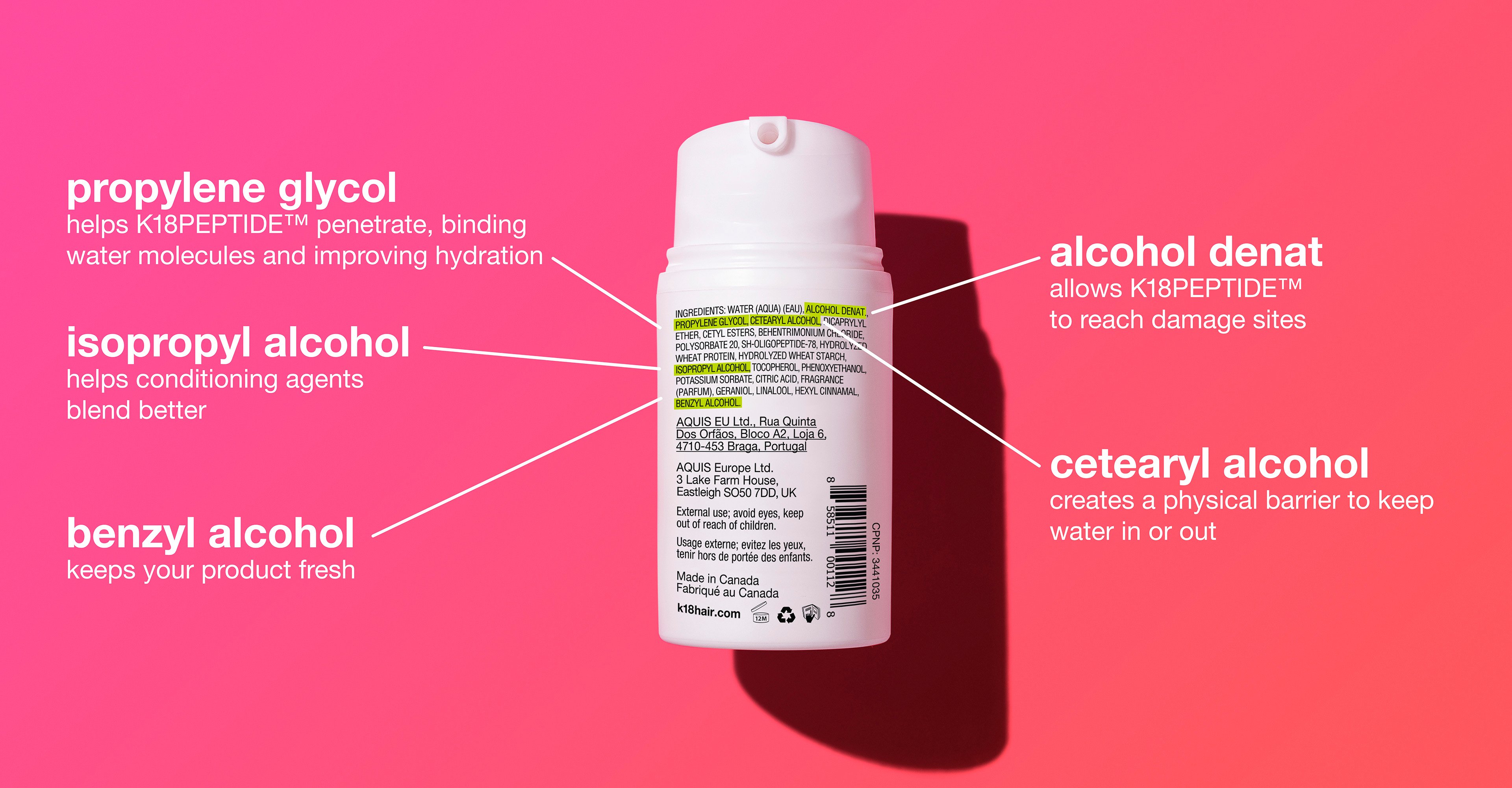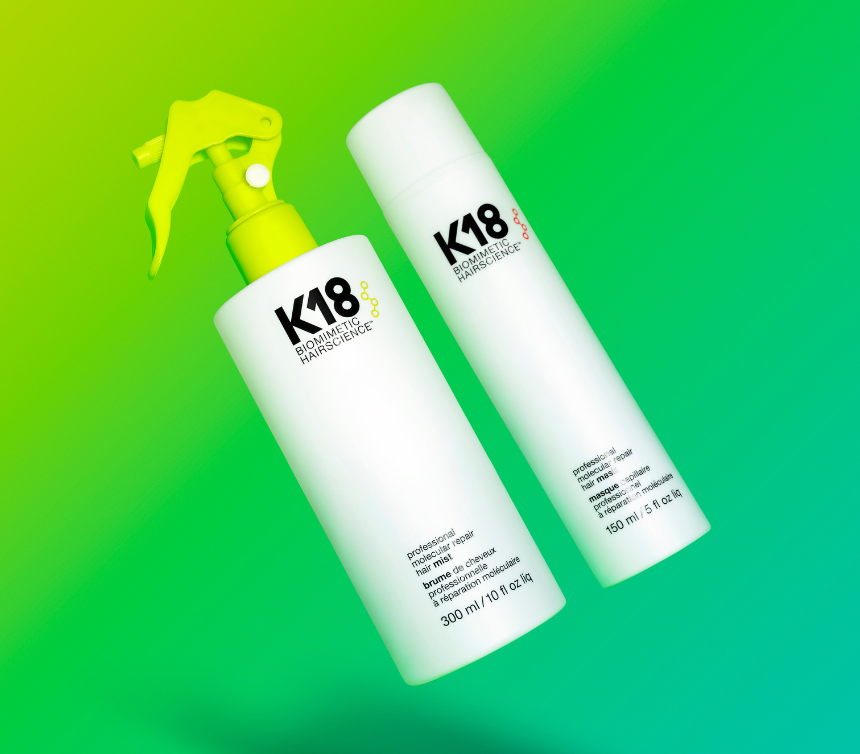Every K18 ingredient serves a specific purpose to benefit hair—without fillers or fluff—so your routine does more with less.
When building a formula, there are so many ingredients to choose from.
Aside from benefits specific to hair—like frizz control or heat protection—there are many other factors to consider when deciding what to include. These are just a few examples that formulators take into consideration when designing a new product:
stability: Will the formula stay together when exposed to different conditions?
sensory: Will the product feel nice and impart softness without weighing hair down?
format: Will this type of product be easy to apply and use?
safety: Will the product inhibit the growth of harmful microbes?
pH (if the formula is water-based): What pH is best for hair? Are there ingredients that require a specific pH range to function optimally?
cost: Is it possible to manufacture this at a price consumers want to buy?
But the most important of all? Compatibility and synergy, or how ingredients play with one another and in what percentage they are most effective to achieve desired benefits.
K18’s intentional formulation philosophy
What’s included in each K18 formula ultimately comes down to research (delving into literature) and experimentation (running tests to identify top performers).
Multifunctional ingredients can provide more than one benefit to a formula. For example, the squalane in the molecular repair oil works to smooth and soften hair (sensory), impart shine (look), fight against frizz (performance), and contribute to heat protection.

Not only is it crucial which active ingredients are selected, but equally so how they are combined and in what intentional percentages for optimal results. Because when it comes to formutation—more doesn’t mean more.
Today we’ll explore the K18 formulation ethos, the “why” behind K18 ingredients, and how less-is-more, intentional philosophy comes to life in every formula—from AirWash™ dry shampoo to the leave-in molecular repair hair mask.
AirWash™ an innovative approach to dry shampoo
The reinvention dry shampoo was formulated to refresh all hair types without typical pain points associated with traditional dry shampoos like white cast or starchy buildup that can impact scalp health.
The hero ingredient of AirWash™ dry shampoo is odorBIND™—a fusion protein that eliminates odor-causing molecules.
odorBIND™ combines an odorant-binding protein with K18PEPTIDE™. K18PEPTIDE™ anchors the fusion protein to hair, while the odorant binding protein captures odor-causing molecules for long-term odor protection.

However, odorBIND™needs specific conditions to work, which is one of the reasons alcohol is in the formula.
why reconsider “taboo” ingredients?
When you see alcohol as an ingredient on a bottle, it may send up some red flags. That’s because alcohol is often considered a “taboo” ingredient due to its potential to irritate or dry out skin. But that’s only true for certain alcohols, and even then it depends on the concentration and overall formulation.
It’s important to look not only at individual ingredients, but how a formula works together as a whole.
AirWash™ was intentionally formulated to clinically eliminate odors and reduce oil while preventing dryness and scalp buildup. odorBIND™ takes care of the first part by recognizing, trapping, and replacing unwanted odors with a subtle fragrance for up to three days*.
But how does it reach the part of hair where it can do this effectively? A small amount of denatured [alcohol], also known as ethanol, in AirWash™ helps the fusion protein to firmly bind to hair, protecting from odor at the right place. This small amount of alcohol is why the formula is able to apply wet but dry down quickly without reverting heat-set hair styles.
This same form of denatured alcohol, plus other forms at intentional percentages for optimal performance, are also present in the molecular repair hair mask.

Denatured alcohol is used in K18 formulas to open the gates for our peptide to reach hair’s damage sites. A very low concentration of isopropyl alcohol is also used to help conditioning agents blend better into the formula, without being directly added to the formula itself (plus, they evaporate so you wouldn’t even know they were there).
Cetearyl alcohol is a fatty alcohol that does double duty—its waxy consistency creates a physical barrier to keep water in or out (depending on the formula) and holds the mask together for easier application. Propylene glycol is another penetration enhancer that helps K18PEPTIDE™ penetrate, binding water molecules and improving hydration.
Finally, benzyl alcohol acts as a cosmetic preservative, keeping the product fresh while it sits on the shelf. This and cetearyl alcohol do not contain ethanol and can even be used in products marketed as “alcohol-free.”
ingredient synergy in action
All of this to say, even if an individual ingredient has a reputation for something, that doesn’t mean it can’t be successfully incorporated into a formula to share its benefit without any drawbacks. For example, the percentage of alcohols used in AirWash™ and molecular repair hair mask are key to getting the results you love.
While understanding what ingredients are in products is important, remembering that what they do and how the formula works together in symphony can make all the difference in a product.
Intentional formulation allows us to create products with fewer ingredients that do more with less—less product, less waste, and less time in your routine.



